You have access to this premium content thanks to the FALATH & PARTNERS law firm, which successfully aids Americans with Slovak ancestry in obtaining Slovak citizenship and reconnecting with their roots.
There were two moments that pushed Michal Rázus to become a professional genealogist. One was his surname, identical with that of famous siblings, writers Mária Rázusová-Martáková and Martin Rázus, and a successful search of a Californian for his Slovak ancestors, whom he accompanied during that process 22 years ago.
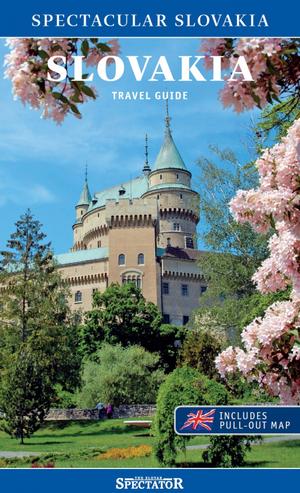 A helping hand in the heart of Europe offers for you Slovakia travel guide.
A helping hand in the heart of Europe offers for you Slovakia travel guide.
“Those were strong impulses that showed me that I can do things that bring people together,” Rázus told The Slovak Spectator. “This story inspired me to do genealogy first as hobby, which later evolved into a job.”
While he succeeded in identifying family links with the two writers, the Californian’s story directed him to specialise in searching for ancestors of Americans in today’s Slovakia.
“These people are still interested in their roots. They are looking for and want to learn more about their ancestors who often left what is today’s Slovakia when they were just 16 or 17 years old some hundred years ago and maybe never returned to Slovakia,” said Rázus. “They want to pay tribute to them this way.”
By the historical grave
Online sources
Slovakiana.sk
familysearch.org
myheritage.com
ancestry.com
In 2002, Rázus helped a couple from California who were searching for the man’s relatives in the vicinity of the eastern-Slovak town of Bardejov. His grandfather had left Slovakia when about 16-17 for America. He returned only once, in 1936. At that time, he found the grave of his mother, immortalised in a photo of him and his sister at this grave.
“We found the exact grave at which this photo was taken. That grave still had flowers on it, so obviously someone cared for it,” recalled Rázus, adding that they managed to find his relatives and restore broken family links. “We are still friends with the Californian couple today.”
Where to start
Rázus likens searching for ancestors to baking a cake. While someone likes to bake it on their own and improve the recipe until it is perfect, others prefer to go to patisserie to enjoy a cake.
“With genealogy it is similar. If you find the passion for it and you try to solve every problem you encounter on your own, maybe you wouldn’t need a genealogist in the end at all,” said Rázus, who shares that passion for genealogy.
When searching for ancestors, Rázus recommends starting with living family members, such as parents or grandparents and other relatives. They can provide basic information about the family, birth certificates, documents, photos and so on.
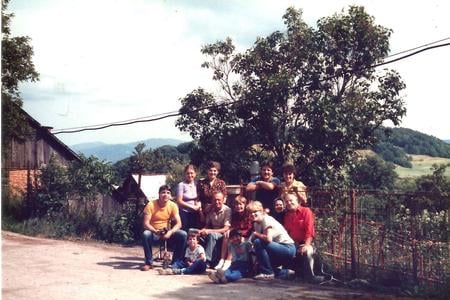
“First-hand stories are always the most interesting,” he said, adding that these are pieces of a mosaic, which, however, will never be complete.
Then he recommends extending the circle and visiting, for example, cemeteries. There is also a website, cintoriny.sk, the advantage of which is that there are records of graves that no longer exist.
It is also worth searching for ancestors via various websites with digitised birth, marriage, death, church and civil records, like familysearch.org, myheritage.com or ancestry.com. They contain a large number of records in a digitised and searchable form.
“Not all records have been digitised yet, mostly birth records are already online,” he said, estimating that already 90 percent of birth records are online today and that this share keeps growing.
These records go as far as the end of the 18th century. At that time keeping records became obligatory in what is now Slovakia.
“Of course, there are some exceptions; the oldest records in Slovakia, are from Bardejov and Košice and dates back to 1590,” said Rázus. Records of noble families are more detailed and date farthur back in time.
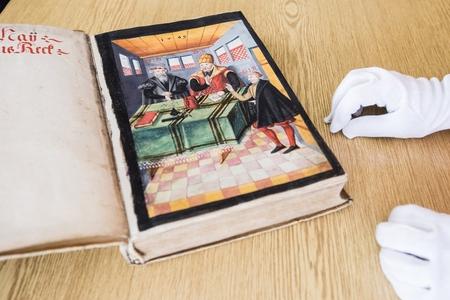
In line with legislation and personal data protection, online records are available until the late 19th century, in order to protect the personal data of still living persons.
“When looking for younger relatives and ancestors, the researchers need to have been in close relationship with those persons,” said Rázus, adding that people do not need to be afraid that their family secrets will be revealed.
Another source of information are censuses from 1930 and 1940, available on the Slovakiana website. But, in the case of censuses Rázus admits that there is quite a high occurrence of error.
Knowledge of such languages as Latin, German or Hungarian may be very helpful when searching for ancestors either in online or paper archives. This is because records used to be kept either in Latin, Hungarian German and Slovak – depending on time period and historical political context and type of record, either church or civil.
“We have to take into consideration the political context as Slovakia used to be part of the Austro-Hungarian kingdom and thus, especially during strong Hungarianisation, the registers were actually predominantly in the Hungarian language,” said Rázus.
There are also others specifics, for example, the Greek-Catholic registers, which were partly written in Cyrillic. For these, researchers should know the basic conversion of the names of their ancestors into individual languages.
It also helps when researchers know the locality or other details as in Slovakia there are frequent surnames as Horvát, Varga or Kováč.
“We can enter into online databases Michal Kováč born in 1850, but we may end with as much as 10 Michal Kováčs,” said Rázus. “To identify the proper Michal Kováč, we need to know some additional information, for example who were his parents or from where he came from.”
Another issue is that as historical records were scanned and put online by volunteers without a precise knowledge the local linguistic nuances, a lot of names are transcribed incorrectly.
“You have to be very careful when searching,” said Rázus, recommending that if researchers do not find their ancestors during the first search, even though they know that that record was indexed, i.e. put online in a searchable form, they should try under some other filters or go via each page of the record manually to find them.
If they exhaust all these sources, they may set off for archives to look in original paper records.
“It is always an authentic experience to visit archives and actually hold huge old registers, bound in leather and five kilogram heavy, in hands,” he says, adding that especially a nice archive is in Spišská Kapitula in easter Slovakia. “They are bridges to the past.”
Turning to a professional genealogist
Searching for ancestors is a demanding work, requiring a lot of efforts, time as well as money either for travelling or fees in archives.
“You can search for one piece of information really for as long as a whole year, and came across it only by chance,” he said.
Those lacking patience, endurance or time can turn to professional genealogists.
“They know how to get the required data in the most effective way,” said Rázus.
Those interested should approach a genealogist with some basic data of the relatives like names, dates and places of their births or deaths and marriages. From here the genealogists can start the search.
How much they will pay depends on individual genealogist and the way of his or her work. In case of Rázus, who specialises in genealogy research and private ancestral tours, it is rather a payment for documents founds when the starting package covering an initial analysis of available sources is around €100-€150.
“It is always a matter of agreement,” he says.
When they identified new opportunities, the research may continue when the budget for each other phase may be between €300-€500.
“It is always transparent so that the person knows where we are at the moment in that research and how we can go forward,” said Rázus.
When the research is complete, those interested can order an electronical or exclusive hand painted version of the family tree.
Each case is unique
Rázus specialises in searching for ancestors of Slovaks living in Slovakia and descendants of Slovaks who emigrated to the US. Around the year of 1900 there was a large emigration wave especially to the US. But the family ties went interrupted either because of the economic crisis, communism and world wars.
“When that first generation died, their children and grandchildren have lost contact with their relatives in Slovakia,” said Rázus. “Now they have been looking for their roots and re-connecting with their families in Slovakia.”
One of such a re-connecting stories, even not a typical one, was a story of a young woman from Trinidad who recently approached Rázus. Her father emigrated from Czechoslovakia in 1968. But he died in a car crash when she was 14 years old. She knew only his name and that he had two sisters in Czechoslovakia.
“This was quite a puzzler, because his surname was Czech-sounding,” recalled Rázus.
Nevertheless, he managed to find one of the sisters.
“When she picked the phone, she burst in tears because they had no idea what happened to their brother,” recalled Rázus. They were in some touch even after he emigrated. Then from some point he just did not write anymore and they never heard from him again. They had no idea what happened to him.
Thanks to his daughter and her resolution to find her family in Slovakia that they got known what happened to their brother.
“It was sad for them to find out that he is not alive anymore, but on the other hand they found out that they have a niece,” said Rázus.
Spectacular Slovakia travel guides
A helping hand in the heart of Europe thanks to the Slovakia travel guide with more than 1,000 photos and hundred of tourist spots.
Our detailed travel guide to the Tatras introduces you to the whole region around the Tatra mountains, including attractions on the Polish side.
Lost in Bratislava? Impossible with our City Guide!
See some selected travel articles, podcasts, traveller's needs as well as other guides dedicated to Nitra, Trenčín Region, Trnava Region and Žilina Region.


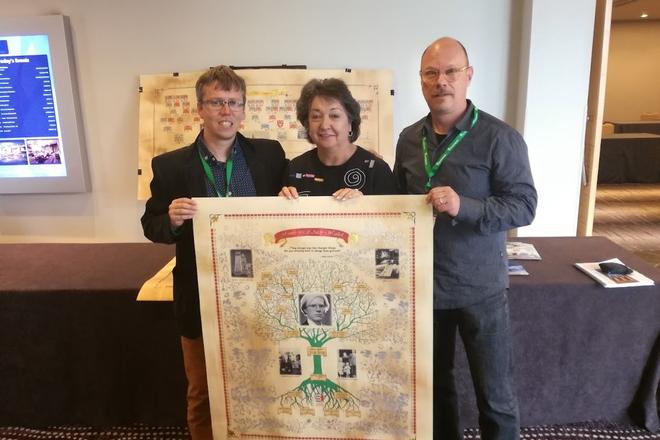 Family tree of Andy Warhol, Michal Rázus is on the left. (source: Archive of Michal Rázus)
Family tree of Andy Warhol, Michal Rázus is on the left. (source: Archive of Michal Rázus)
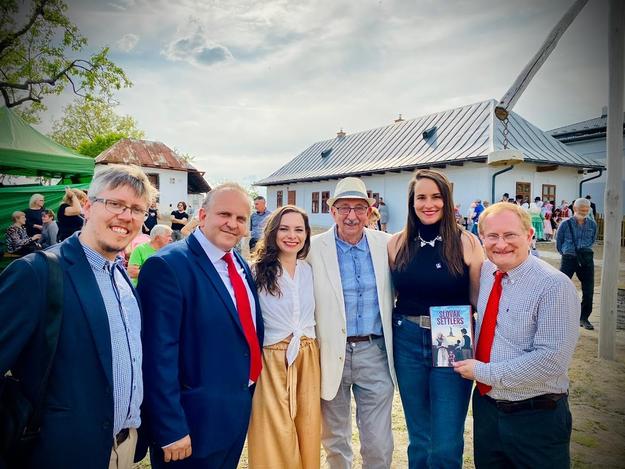 Michal Rázus with his clients in front of the Museum of Emigration from Slovakia to North America in Pavlovce nad Uhom-Ťahyňa, eastern Slovakia. (source: Archive of Michal Rázus)
Michal Rázus with his clients in front of the Museum of Emigration from Slovakia to North America in Pavlovce nad Uhom-Ťahyňa, eastern Slovakia. (source: Archive of Michal Rázus)
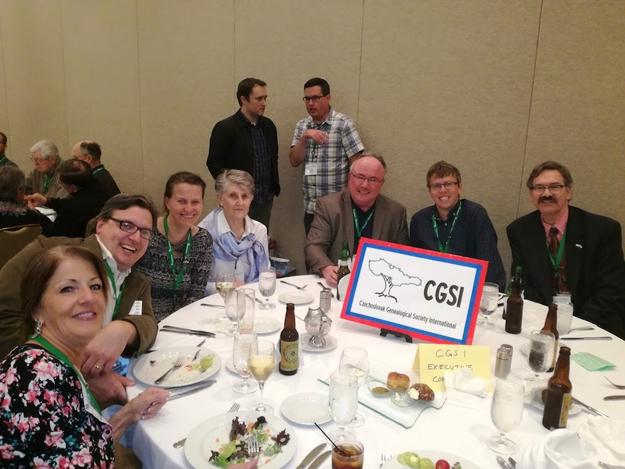 Genealogists exchange their experiences at conferences, Michal Rázus is the second on the left. (source: Archive of Michal Rázus)
Genealogists exchange their experiences at conferences, Michal Rázus is the second on the left. (source: Archive of Michal Rázus)
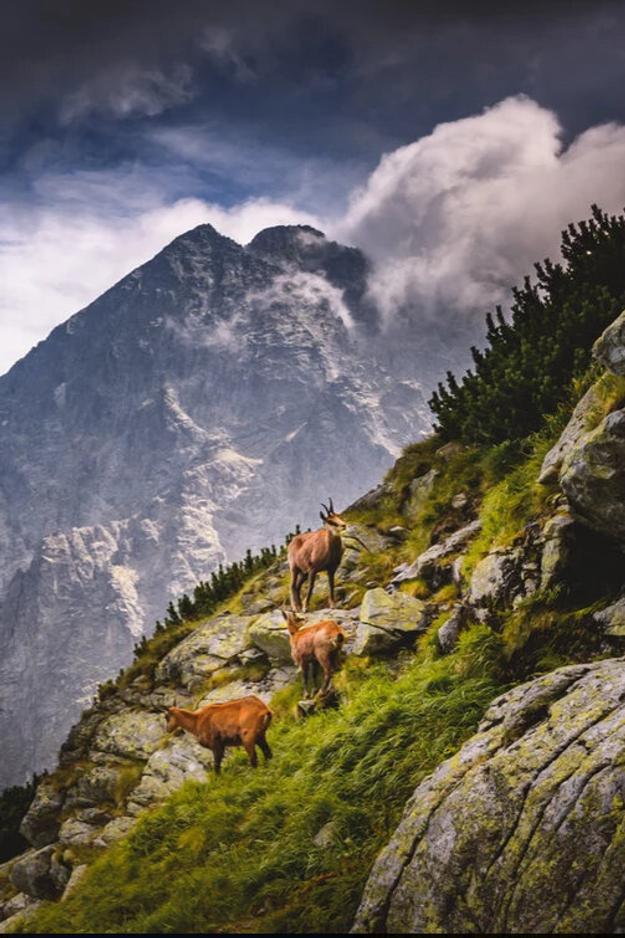 Spectacular Slovakia Travel Guide: The High Tatras (source: Lukáš Kucej)
Spectacular Slovakia Travel Guide: The High Tatras (source: Lukáš Kucej)